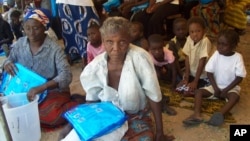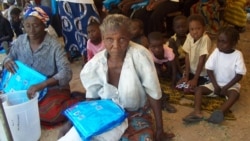Last year, malaria sickened over 214 million people across the globe, and killed some 438,000 of them. And although the disease is relatively common in tropical and sub-tropical regions, 90 percent of the deaths occurred in Africa. Most of them were children under five years of age.
But consider that since the turn of the century deaths from malaria have fallen by half: according to the World Health Organization, in the year 2000, 985,000 people succumbed to the disease. Today, malaria is in retreat due to a strong global push to reduce deaths and illness. More than 100 countries are now malaria-free, and another 57 cut their incidence of malaria by at least three quarters.
Ten years ago, President George W. Bush founded the President’s Malaria Initiative, a historic U.S. Government effort to lead the fight against malaria. His successor, President Barack Obama, expanded the effort, eventually doubling its funding. Today, the Initiative focuses on 19 of the hardest-hit countries in sub-Saharan Africa, and three countries in Southeast Asia.
Our investment has been well worth the effort. Since the launching of the President’s Malaria Initiative, or PMI, led by USAID and implemented together with the CDC, overall mortality rates among children under five years of age have significantly decreased in the target countries, anywhere from 18 percent in both Liberia and Nigeria to 55 percent in Senegal and Zambia.
Last year alone, PMI funded the spraying of the homes of over 16 million people, and procured around 42 million long-lasting insecticide-treated bed nets. The United States also provided 60 million antimalarial treatments, and more than 54 million rapid diagnostic tests.
In his State of the Union Address in January, President Obama set forth a long-term vision of ending the disease. Noting that the end of HIV/AIDS is now within our grasp, he said, “We have the chance to accomplish the same thing with malaria.”
For that reason, the Obama Administration requested from the U.S. Congress, an extra $200 million to fight malaria world-wide, which would bring next year’s total U.S. funding for prevention and treatment of the disease, to $874 million. With additional funds, PMI will increase support to malaria-affected countries to further reduce malaria deaths and substantially decrease malaria illness, toward the long-term goal of elimination.
The United States is committed to ending this disease that prematurely ends the lives of so many people, especially children. And we call on all our partners, including non-governmental and international organizations, countries and communities, to join our efforts.

















